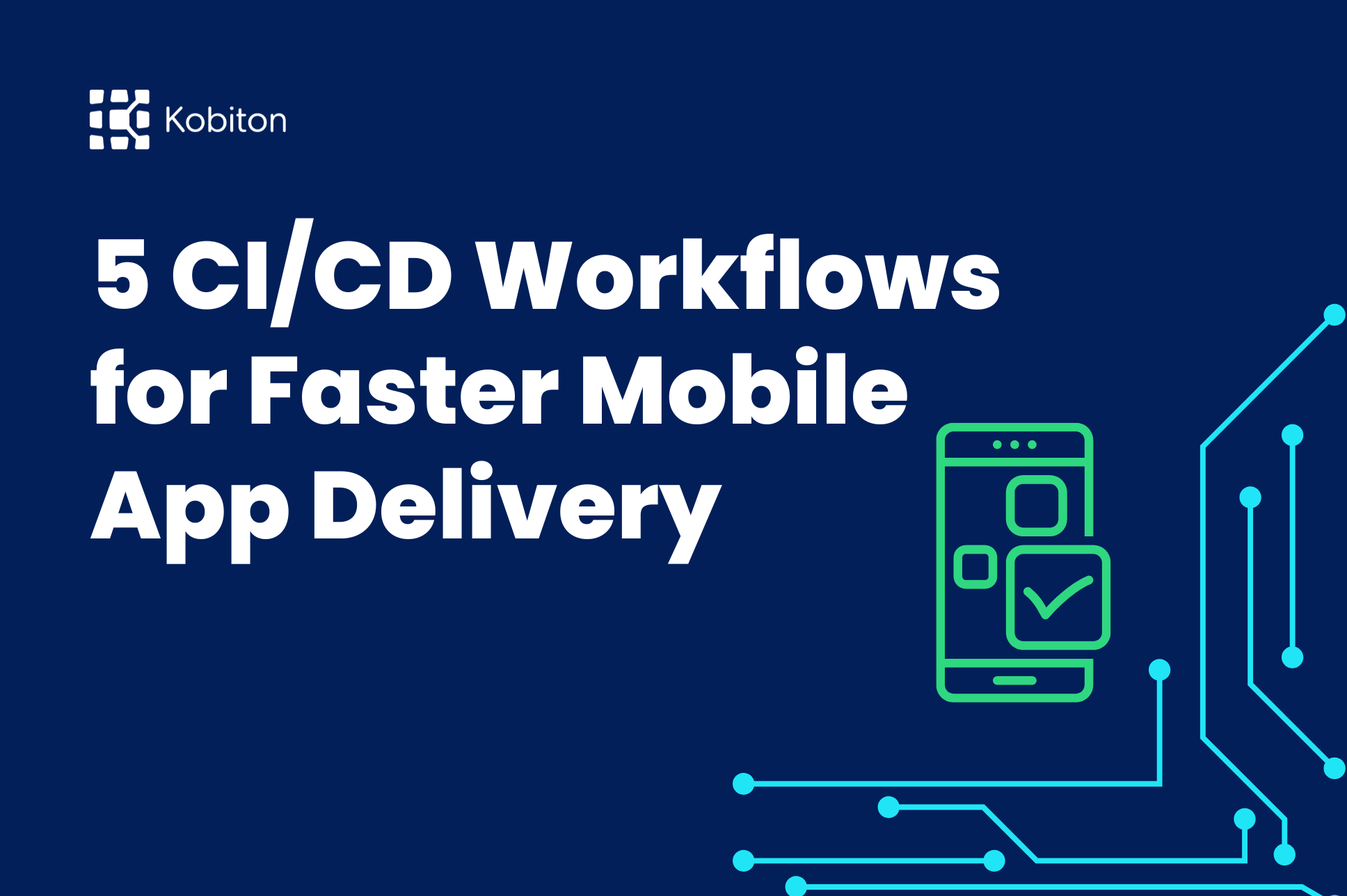
5 CI/CD Workflows for Faster Mobile App Delivery

kbadmin
As we have discussed in our last few blogs focused on AI in software testing, high quality software is the key to success. This particular blog dives into how to optimize your testing workflows using AI test case generation and risk based strategies. We’ll explore how you can modernize your test planning, build comprehensive test suites, and incorporate risk-based prioritization.
A common challenge for product organizations is that test planning can be slow, reactive, and often incomplete. Traditional test planning methods rely on manual review of requirements, user stories, and acceptance criteria to create test cases and regression suites. While this process might work for small teams, it becomes unpredictable when shipping across multiple platforms. That’s where AI testing workflows revolutionize the process.
AI excels at discovering patterns in large datasets. During test planning, it can analyze historical bug data, user behavior logs, and system performance metrics to pinpoint the most vulnerable areas of the application. AI can also propose specific test scenarios to incorporate into your plan, helping your QA team focus on what matters most.
By utilizing AI for test planning, you can create a tighter feedback loop between product management, engineering, and QA. Instead of relying on best guesses or incomplete data, you let the data itself guide your priorities. The result is a test plan that’s more comprehensive, targeted, and aligned with real-world usage. This level of proactive planning can mean the difference between catching a critical bug early and scrambling with emergency patches right before a release.
Once you have created a plan, AI test automation can expedite creating and maintaining test cases which is usually the most time consuming aspect. Manual test case generation is a mix of domain knowledge, process repetition, and guesswork. It’s labor-intensive, prone to human error, and must be updated every time the application changes. AI, on the other hand, can leverage historical data to self teach and modify the application automatically.
Most product organizations have years of reports and metrics unused in various systems.With AI, you can feed this data into machine learning models that learn from patterns in test outcomes. These models can then automatically propose new or revised test cases based on the most common failure modes or newly introduced features. This approach is particularly valuable for regression testing, allowing for the identification and monitoring of recurring issues to prevent them from reappearing in future releases.
Another area where AI in Testing helps is model-based testing. In this approach, AI constructs a model or blueprint of the application’s workflows, user paths, and system states. AI algorithms then identify logical pathways through the application that might otherwise be missed by manual testers. These pathways can be translated directly into automated test scripts, expanding your test coverage without adding more manual QA overhead.
A common frustration with large-scale test automation is maintenance: as the application evolves, test scripts become fragile and break. AI can reduce this burden by adapting your test suite in real-time. When a new feature is added, the system can detect new UI elements, updated APIs, and other structural changes and update the tests accordingly. This allows teams to push code changes multiple times per day or week keeping your suite relevant and robust.
Teams can increase coverage, confidence, and resources by incorporating AI-driven test case generation. This creates a higher value test effort.
Risk-based testing focuses on areas that pose the greatest risk to the business and the user experience. Traditionally, risk is assessed by domain experts who consider factors like business impact, frequency of use, technical complexity, and past production issues. However, these assessments are often subjective and may not always be current with the product’s evolution.
AI-driven risk-based testing brings objectivity and scale to the process. Instead of relying on gut feel or anecdotal evidence, machine learning models crunch user analytics, performance metrics, and code commits to calculate a “risk score” for each feature or workflow. With this “risk score,” you gain insight into which area needs the most testing and can test there with confidence.
One of the main benefits of AI-based risk scoring is real-time prioritization. Let’s say you just introduced a new payment flow that modifies core database transactions. Due to past changes, the machine learning model might identify that this could impact checkout reliability. It would assign a high risk score and prompt the QA team to increase test coverage to that area. On the other hand, features that are rarely used or have historically been stable might receive a lower risk score informing the QA team less resources need to be directed towards those tests.
Risk-based testing doesn’t mean neglecting low-risk features. You must find a balance. By focusing your team on high-risk areas, you ensure their limited resources are put to their best use. Meanwhile, automated checks can cover the lower-risk sections of the application. This balanced coverage with AI testing workflows gives teams a more defined direction for resource allocation than the traditional “test everything equally” mentality.
Embracing AI test automation for test planning, generation, and risk-based prioritization offers several benefits that can have a profound impact on your entire product development lifecycle.

Adopting AI in Testing is more than adding a cool new tooltesting routine. It involves a mindset shift—from manually orchestrating test cases to trusting AI-driven insights. Here are a few strategic considerations to keep in mind:
By merging product management expertise, robust QA practices, and cutting-edge AI capabilities, organizations can elevate their testing strategy to a whole new level.
When you’re ready to take your testing workflows to the next level, consider how AI test automation tools, like Kobiton’s advanced platform, fit into your strategy. From AI-driven test case generation to risk-based prioritization, these technologies can serve as the backbone of an efficient, data-driven QA process.
If you’d like to explore more about the broader implications of AI in Testing, be sure to check out AI in Testing: A Comprehensive Guide. There, we go into detail on best practices, real-world case studies, and the future of AI-driven QA. Here’s to shipping higher-quality products faster, with less risk, and far fewer headaches for everyone involved.
Remember, the ultimate goal is delighting customers. By embracing Testing workflows with AI—specifically AI-powered test case generation and risk-based strategies—you’re not just improving your QA; you’re making sure your product continues to serve users well, release after release. And that’s exactly what world-class product organizations should strive for.